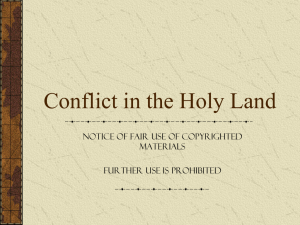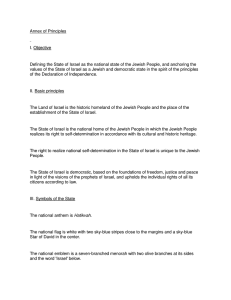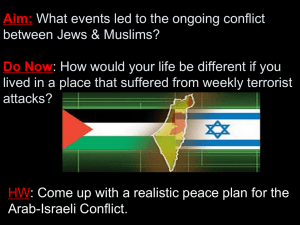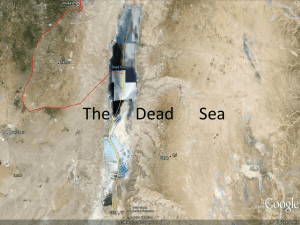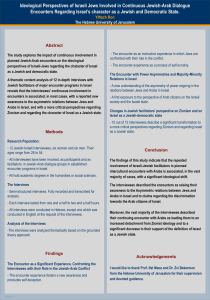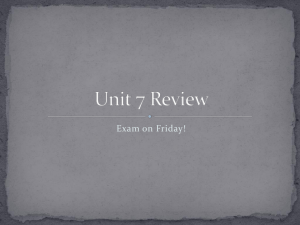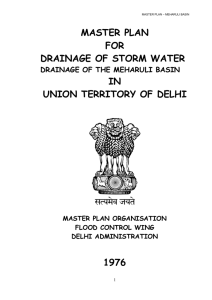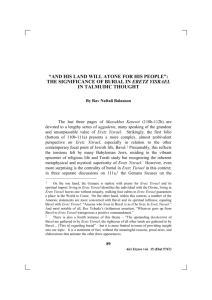מצגת של PowerPoint
advertisement
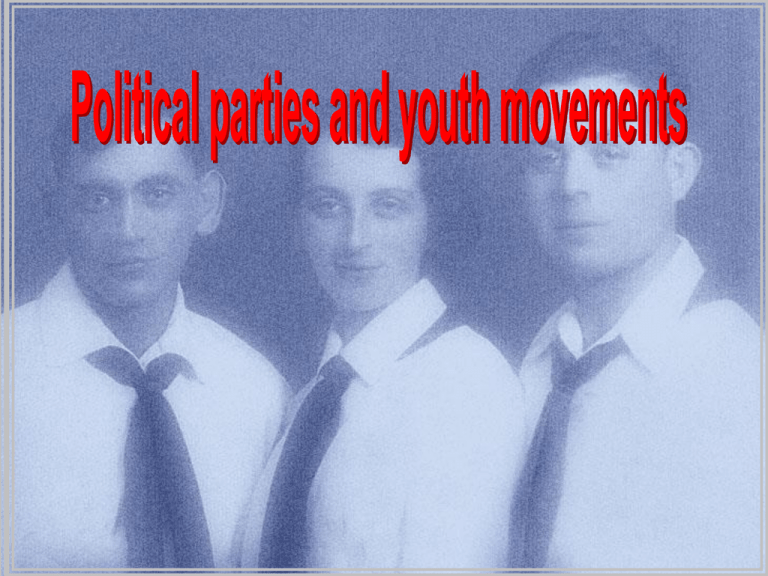
New winds started to blow in Hrubieszow at the beginning of the 20th century… World War I, foundation of national states, the Russian revolution, Balfour declaration and the British mandate in Palestine, woke the public from its slumber, particularly the youth. Education, Zionism and Jewish nationalism, socialism and communism in their various nuances excited the youth who were tired of life's hardships and increasing anti-Semitism in Poland, and drove them to intensive activity. Everyone suggests a solution for Jewish existence in Poland. Activities include establishment of parties, youth movements, training farms, newspapers, libraries, schools, educational, cultural and sports organizations, workers' unions and voluntary societies. Along these new organizations, continue to exist the old traditional bodies, orthodoxy and the Rabbis' courts. All taking part in the turbulent political life in Poland, represented as parties in the community council, in the town's council and in the Sejm (The Polish Parliament). Many religious parents were outraged and resentful about their children's dreams of Zionism, education, socialism and communism. However, even when they joined all these new movements, the young people tried not to hurt their parents' feelings and be considerate. In 1927 the branch of Betar in Hrubieszow was opened and thus the political panorama of the town was complete. Parties’s fliers for elections to the community’s council In the orthodox movements, the largest in the town – Agudat Israel and Poalei Agudat Israel. In the non-Zionist faction – the Bund, the Communists. In the Zionist movements - General Zionists, Ze’irei Zion, Poalei Zion, Mizrachi and the Revisionists. Youth movements affiliated to these parties: Ha-Shomer Ha-Tzair, Freiheit, Skif, Zukunft, Betar, Tzeirei and Pirchei Agudat Israel. The cultural activities of the various parties and movements included opening public libraries: Brenner for the Zionists, Peretz for the Bundists and a library for the Agudat Israel members. Agudat Israel was a modern party. Took part in elections and dominated the community’s council since 1924. Founded the Bet Ya’akov school, a yeshiva and Talmud Torah. Agudat Israel members in Hrubieszow The Bund – a Jewish secular party in Poland that focused on laborers and small shopkeepers (Chlupnikes) in town. . The leaders, educated intelligencia, fought to improve their professional status and cultivating Yiddish culture. They initiated ideological activities, demonstrations, journalism and youth movement, the Medem school; the Bund members were involved in local politics and in 1927 the town’s council includes three Bund representatives and one member of the council. Two youth movements were affiliated to the Bund – Skif and Yugend Bund Freiheit. The Bund Committee Members, Hrubieszow 1936 Bund members from Hrubieszow at a Convention in Lublin, Poland July 6, 1933 The Communist Party 1920 – The Bolsheviks overcome the Polish and rule in Hrubieszow, there is intense communist activity in town. When the Polish return to rule the town, the communists leave for Russia and the party disintegrated. At the end of 1921 it renewed its activity but was declared illegal. In 1931 Hrubieszow police took action against the communist party. Its members were arrested and put to trial, and sent to prison. The library was transferred to the Bund library. Communist activists, Hrubieszow 1925 Hashomer Hatzair was a small movement, whose members were mainly students. Its center was at the Hebrew school; the members spoke Hebrew among themselves, and focused on pioneering and preparation for immigration to Palestine. The “Tiqva" group of Hashomer Hatzahir members, Hrubieszow 1927 The "Shoshanim" Hashomer Ha-Tzahir girls group young of Hashomer members,Hatzair, Hrubieszow, Hrubieszow 1926 1928 Yehudah Hofman, member of the "Reuven" group, holding Yiddish newspaper, Hrubieszow 1928 Freiheit – Deror – was targeted mainly at the working youth and was very popular among the poorer people, who found there a home as well as a cultural center. Its goals were Zionism, emigration to Palestine, they usually spoke Yiddish. Seal of Hrubieszow Committee saying: "The Socialist Association of Hapoel Hatzair Deror" in Poland. Members of Borochow Group of the ”Deror” Organization, Hrubieszow 1927 Hechalutz movement engaged young people of pioneering movements to prepare them for immigration to Eretz Israel. Hechalutz members harvesting, Grabow, Poland 1928 Joseph Epstein and young members of Hechalutz, Hrubieszow 1931 Rozka Essig (2nd right) and Hechalutz members, Hrubieszow 1935 Ha-Halutz youth activity, Hrubieszow 1935 Rav Josef Wertheim was the town’s Rabbi since 1935 One of the leaders of Mizrahi in Poland and in Hrubieszow, reputed for his knowledge and wisdom. A Zionist rabbi, intellectual and liberal, whose children were all members of youth movements. He was well liked by the entire population, and symbolized in his personality Jewish solidarity. This solidarity was demonstrated in 1939, when the entire Jewish public protested against the “White Paper”. All traffic in town stopped, workshops were closed. The Jewish community gathered in synagogues to listen to the rabbi’s sermon and to speeches of the secular representatives. The community’s council sent a protesting telegram to the British Prime-Minister. Rabbi Wertheim immigrated to Eretz Israel with his family. He died and was buried in Jerusalem in 1946 The Jewish youth of Hrubieszow was active in Sports too Training team, Hrubieszow 1917 The Kraft Soccer Team, Hrubieszow 1927 Hapoel membership card of Shmaryahu Mintz, 1935 Flower Day for the Jewish National Fund – one of the constant activities of Hrubieszow Zionists. Reizel Miller and Ephraim Stein collecting donations on "Flower Day", the annual day of the JNF, Hrubieszow 1931. Bazaars and fund raising activities for Eretz Israel laborers Fair for collecting donations for the JNF, Hrubieszow1936 Representative of the JNF was the young accountant S. Mintz Lag Ba-Omer was a day of outdoor activities for the children. Many boys and girls gathered on Panska street, received blue-white flags and singing Hebrew songs went to the forest. Jewish scouts celebrating Lag Ba-Omer, Hrubieszow 1931 (The instructor is Pinkhas Meir) May Day was a festival of all socialist parties and movements, a day of identification with the workers of the world and Eretz Israel. “Our town looked festive on May Day. Workers with red flowers filled the streets since morning. They marched to the gathering place, the choir sang The International and the hymn of Po’alei Zion. Speeches were held, and greetings were sent to all workers of Eretz Israel and the World. (From “Arbeiter Stimme”, the Po’alei Zion workers’ organ) Members of Working Eretz Israel on May Day, Hrubieszow 1935 Training Farms and Emigration to Eretz Israel The Zionist movements trained their members to Zionism, pioneering and taught them Yiddish and Hebrew literature. One of their declared goals was immigration to Eretz Israel, and one of the means – the training farms – Hachshara. In 1930 training farms became very popular, emissaries from Eretz Israel came to encourage the youth to join them. Many went to various training farms, some agricultural and others industrial. In Hrubieszow there was also a training farm, whose members learnt carpentry, lumberjacking and worked in the local flour mill. Hechalutz members on training farm pickling cucumbers, Dubjenka, Poland 1935 Hechalutz members on Hachshara in Grochow working in the fields during harvest time, Poland July 1929 Pioneers from Hrubieszow on Hachshara in Robna, Poland 1926 Convention of pioneers from Lublin District, leaving for Eretz Israel, Hrubieszow, Poland 1935

